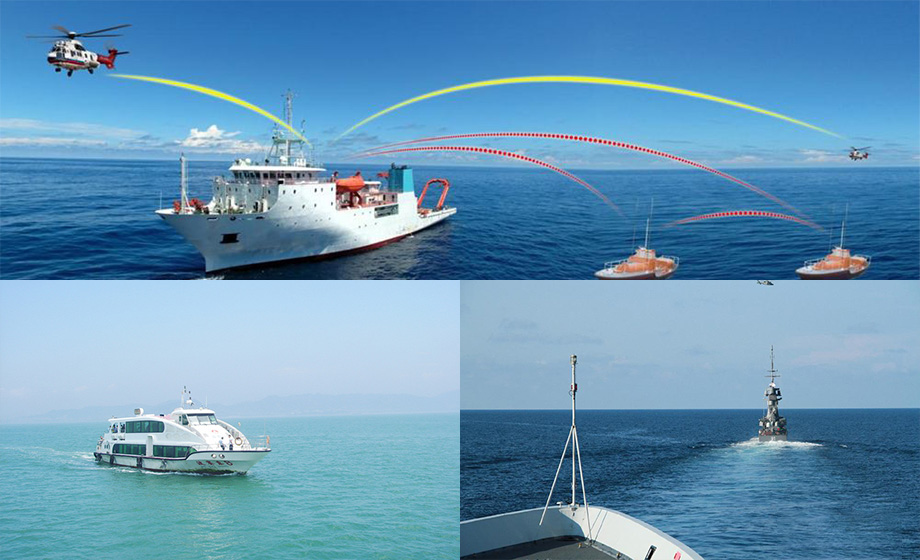LR-WIFI module long-distance WiFi maritime border defense ad hoc network wireless transmission mode, wireless ad hoc network technology wireless communication is a special self-organizing, equal, multi-hop, wireless mobile network, developed on the basis of wireless packet network. In military applications, it is assumed that a router in the traditional Internet is used to talk. If the router is destroyed on the battlefield, the entire network communication will be interrupted. For individual combat, if contact is lost, it will have a great impact on the overall situation.

The emergence of LR-WIFI module long-distance WiFi wireless ad hoc network successfully broke the traditional node problem. It does not depend on the preset infrastructure, and has the characteristics of temporary network, rapid expansion, no control center, strong resistance to destruction, etc. If one of the nodes is destroyed, the router module of the other node starts the routing algorithm according to the position of the adjacent node, and automatically Adjust the communication relationship between nodes to form a new network topology. The main features of LR-WIFI module long-distance WiFi are summarized as follows!
1. No center
Ad-HOC networks do not have a strict control center. The equal status of all nodes is an equal network. Nodes can add and leave the network at any time. Any node failure will not affect the operation of the entire network and is highly resistant to damage.
2. Self-organization
The layout or expansion of the network does not need to depend on any preset network facilities. Nodes coordinate their respective behaviors through layered protocols and distributed algorithms, and nodes can quickly and automatically form independent networks.
3. Multi-hop routing
When a node communicates with nodes outside its coverage, multi-hop forwarding of intermediate nodes is required. Different from multi-hop in fixed network, multi-hop routing in AD-HOC network is completed by ordinary network nodes rather than special routing devices (such as routers).
4. Dynamic topology
Ad-Hoc network is a dynamic network. Network nodes can move anywhere and can be turned on and off at any time, which will change the topology of the network at any time.
The layout or expansion of the network does not need to depend on any preset network facilities. The nodes coordinate their respective behaviors through layered protocols and distributed algorithms, and the LR-WIFI module long-distance WiFi nodes can quickly and automatically form an independent network. Wireless ad hoc networks have also been widely used in military and civilian fields, maritime network communications, border patrols, public security emergency communications, temporary emergency rescue and other industries.
With the development of social information, high-tech products emerge in an endless stream. LR-WIFI module long-distance WiFi wireless transmission application requirements have gradually become an indispensable part of people's lives. It can be said that people's lives are everywhere. People will choose different networks according to their daily habits and needs, which can facilitate daily life and achieve the practical effect of smooth network. So what are the modes of wireless transmission?
1. Access point: In the wireless network transmission mode, the most common one is to connect the network through wireless access, which is responsible for establishing a wireless network card between the wireless router and the computer. This wireless network transmission mode is easy to use and has high network coverage.
2. Client: It only connects to other networks, which can be wired or wireless, but does not send its own wireless network signal. Receive the signal via a computer or laptop. In this mode, the wireless router can connect directly to the client's DHCP and NAT functions through its own gateway.
3. Client network bridge: The network transmission is the bridge of the wireless network. Through wireless transmission, communication can be established between two or more networks. Due to personal network requirements, you can find a nearby power supply port. Wireless networks can be formed between hundreds of meters to tens of kilometers, and can be widely used in homes and companies.
4. ADHOC: This is a wireless network that connects computers to computers, especially when playing large games. This method can connect. This type of connection is not typically used in homes, work and small businesses.
5. Relay: This connection method has the effect of connecting up and down. Emit a signal when it is received. It can solve problems such as obstacles blocking the network signal and causing poor signal. A wireless router in this mode can provide many different functions for even forming a local area network if used properly.
6. Relay bridge connection: The wireless signal is affected by distance and may be limited by the transmission distance. With this connection, this problem can be solved. Through a normal network connection, you can connect to the computer connection part of the wireless router, so that the wireless network signal is stronger, and multiple electronic devices can be used at the same time.
Depending on the application environment, different usage modes can be used, and different wireless network output modes can be selected. The long-distance WiFi of the LR-WIFI module can mainly make the network signal stronger, which is convenient for daily use. Today, with the continuous development and progress of science and technology, there will be more derivative developments of new products and new technologies, but they will also be updated in the near future.



